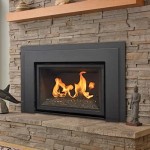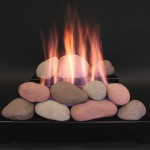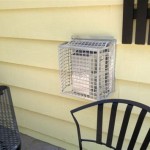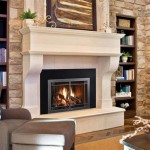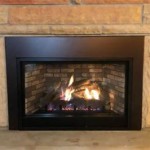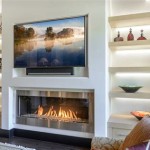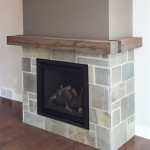Understanding Build-In Fireplaces: A Comprehensive Guide
A build-in fireplace, also known as a recessed fireplace or an insert fireplace, represents a significant architectural feature within a home or building. Unlike freestanding fireplaces, build-in units are designed to be integrated seamlessly into a wall structure, offering a clean, space-saving, and aesthetically pleasing solution for heating and ambiance. This article provides a detailed exploration of build-in fireplaces, covering their various types, installation considerations, safety aspects, and maintenance practices.
The appeal of a build-in fireplace lies in its ability to enhance the visual appeal of a room while efficiently providing warmth. These units are available in a range of styles, from traditional masonry designs to contemporary, sleek models. The inherent integration into the wall structure allows for a variety of design options, enabling homeowners and architects to create a focal point that complements the overall interior design scheme. Furthermore, the space-saving nature of build-in fireplaces makes them particularly attractive in environments where minimizing floor space is a priority.
Types of Build-In Fireplaces
Build-in fireplaces can be categorized based on their fuel source and construction materials. The most common types include wood-burning, gas, and electric fireplaces. Each type offers distinct advantages and disadvantages, influencing factors like installation complexity, heating efficiency, and environmental impact.
Wood-Burning Build-In Fireplaces: These fireplaces offer the traditional ambiance and crackling sound many associate with a fireplace. They typically require a masonry chimney for proper ventilation and are subject to local regulations regarding emissions. While providing a robust source of heat, wood-burning fireplaces generate particulate matter and require a regular supply of firewood. The installation process is generally more complex and costly compared to other types due to the structural requirements for the chimney and firebox.
Gas Build-In Fireplaces: Gas fireplaces offer convenience and ease of use. They can be fueled by natural gas or propane and typically include features such as remote control operation and adjustable flame settings. Gas fireplaces vent through a smaller diameter pipe compared to wood-burning fireplaces, simplifying installation in some cases. They also produce fewer emissions than wood-burning models. However, gas fireplaces require a gas line connection, which may necessitate professional installation and compliance with local gas codes.
Electric Build-In Fireplaces: Electric fireplaces are the most versatile in terms of installation and placement. They require only an electrical outlet and do not produce any emissions. Electric fireplaces use heating elements to generate warmth and often feature realistic flame effects. While they may not provide the same level of heat as wood-burning or gas fireplaces, they are an excellent option for supplemental heating and creating ambiance without the need for venting or fuel storage. They are generally less expensive to install and operate, but the running cost can be higher than gas depending on electricity prices.
Beyond fuel source, build-in fireplaces can be further classified by their design. Direct-vent fireplaces draw combustion air from outside and vent exhaust gases directly outside, preventing the depletion of indoor air. Vent-free fireplaces, on the other hand, do not require any venting. However, vent-free gas fireplaces are subject to stricter regulations due to concerns about indoor air quality and carbon monoxide emissions. Understanding the specific requirements and regulations in a given location is critical when selecting the appropriate type of build-in fireplace.
Installation Considerations for Build-In Fireplaces
Proper installation is paramount for the safe and efficient operation of a build-in fireplace. The installation process varies significantly depending on the type of fireplace and the existing structure. It is strongly recommended that a qualified professional, such as a licensed contractor or fireplace installer, be consulted to ensure compliance with local building codes and safety standards.
Structural Requirements: Wood-burning and masonry gas fireplaces typically require substantial structural support due to their weight. The wall structure must be capable of bearing the load of the firebox, chimney, and surrounding materials. Reinforcements may be necessary to ensure structural integrity. Electric fireplaces are generally lighter and require less structural support, although adequate framing is still essential to secure the unit within the wall.
Venting: Proper venting is crucial for all types of fireplaces that produce combustion gases. Wood-burning fireplaces require a chimney that meets specific height and diameter requirements to ensure adequate draft. Gas fireplaces utilize venting systems designed to exhaust combustion byproducts safely. The type of venting required depends on the specific model and local regulations. Electric fireplaces do not require venting.
Clearances and Safety Distances: Fireplaces generate significant heat, so it is essential to maintain adequate clearances between the unit and combustible materials. Building codes specify minimum distances that must be observed to prevent fire hazards. Clearances should be confirmed for all sides of the fireplace, as well as the area immediately surrounding the opening. Combustible materials, such as wood framing, drywall, and insulation, must be kept at a safe distance or protected with non-combustible materials.
Gas and Electrical Connections: Gas fireplaces require a secure and properly sized gas line connection. The connection must be performed by a qualified gas fitter and inspected to ensure there are no leaks. Electric fireplaces need a dedicated electrical circuit to handle the power demand of the heating element. The electrical connection should be made by a licensed electrician to ensure safety and code compliance.
The installation of a build-in fireplace is not a do-it-yourself project for most homeowners. Attempting to install a fireplace without the necessary expertise and equipment can lead to serious safety hazards and code violations. Engaging qualified professionals is essential for ensuring a safe and properly functioning fireplace.
Safety and Maintenance of Build-In Fireplaces
Once installed, a build-in fireplace requires ongoing maintenance to ensure safe and efficient operation. Regular inspections and cleaning are critical for preventing fire hazards and maintaining optimal performance. The specific maintenance requirements vary depending on the type of fireplace.
Wood-Burning Fireplaces: Wood-burning fireplaces require regular chimney sweeping to remove creosote buildup. Creosote is a flammable substance that accumulates in the chimney as a result of burning wood. A buildup of creosote can lead to a chimney fire, which can be extremely dangerous. Chimney sweeping frequency depends on the amount of use and the type of wood burned. An annual inspection by a qualified chimney sweep is recommended. The firebox should also be inspected for cracks or damage, and any necessary repairs should be made promptly. Ash should be removed regularly and disposed of safely in a metal container.
Gas Fireplaces: Gas fireplaces require periodic inspection of the gas lines and burner assembly. The burner should be cleaned regularly to remove dust and debris that can affect flame quality. The venting system should also be inspected for obstructions or damage. It is recommended that a qualified gas technician perform a thorough inspection and maintenance check annually.
Electric Fireplaces: Electric fireplaces generally require less maintenance than wood-burning or gas fireplaces. The heating element should be inspected periodically for damage, and the unit should be cleaned to remove dust and debris. It is important to ensure that the electrical connections are secure and that the unit is not overloaded with other appliances on the same circuit.
General Safety Practices: Regardless of the type of fireplace, it is essential to follow general safety practices. Never leave a fire unattended, and always use a fire screen to prevent sparks from escaping the firebox. Keep combustible materials away from the fireplace, and never use flammable liquids to start a fire. Install and maintain carbon monoxide detectors in the home to provide an early warning of potentially dangerous levels of carbon monoxide. Ensure all users are aware of the operating instructions and safety precautions.
By adhering to proper safety and maintenance practices, homeowners can enjoy the warmth and ambiance of a build-in fireplace safely and efficiently for many years. Neglecting maintenance can lead to serious safety hazards and costly repairs.

ᑕ❶ᑐ How Much Do Fireplace Built Ins Cost Get The Guide

How To Build A Fireplace Red Cottage Chronicles

How To Build A Diy Built In Fireplace With An Electric Insert The Creative Mom

How To Design And Build Gorgeous Diy Fireplace Built Ins A Home

How To Design And Build Gorgeous Diy Fireplace Built Ins The Sweetest Digs

How To Build A Diy Stone Fireplace Boxwood Design Co

How To Build A Fireplace Red Cottage Chronicles

How To Use The Fireplace Design Studio Build Your Dream

Diy Modern Fireplace Designed Simple

Diy How To Build A Fireplace In One Weekend Whitney Hansen Money Coaching
Related Posts

